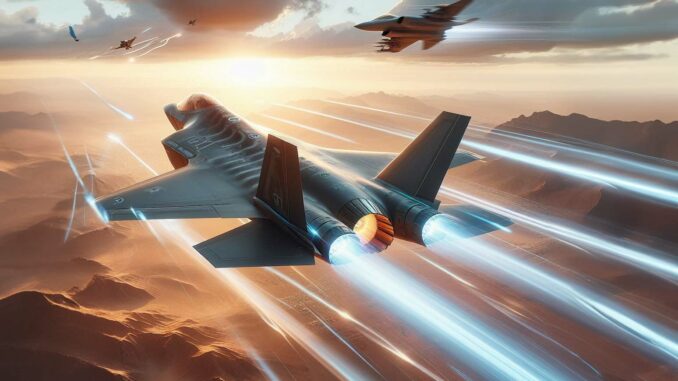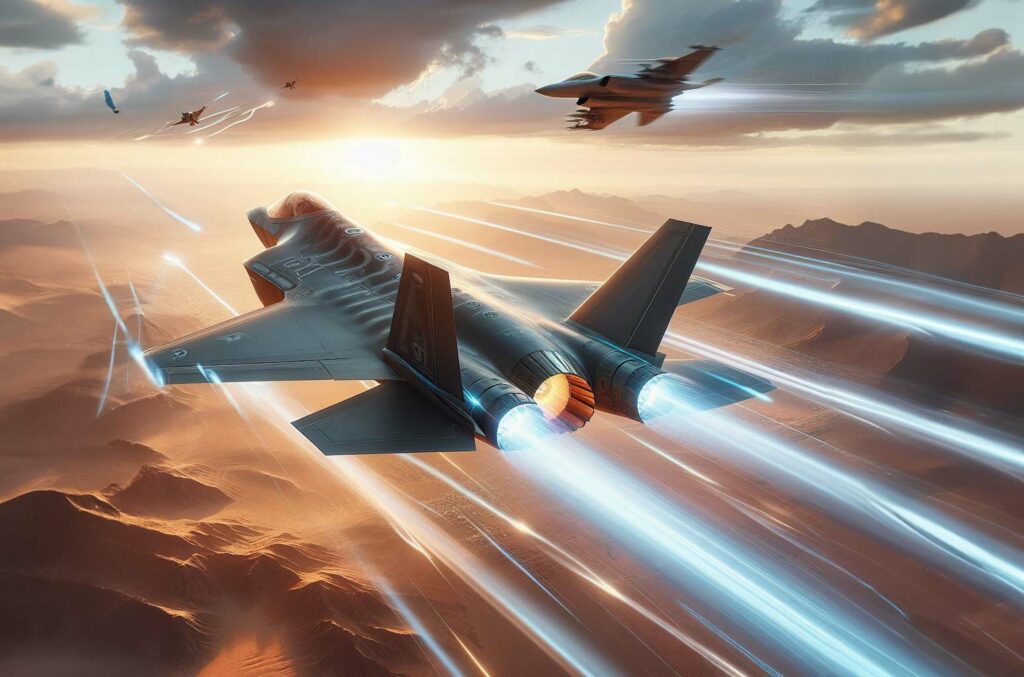
Discover the differences and innovations between the F-35 and NGAD fighter jets, and how they are shaping the future of U.S. air supremacy.
The constant evolution of military aviation technology is clearly evident in the comparison between the F-35 Lightning II and the U.S. Next Generation Air Dominance (NGAD) program. The F-35, already a pillar of modern air power, and the NGAD, a futuristic vision of air supremacy, offer different perspectives on air warfare. As tensions between Washington and Beijing escalate, particularly around the South China Sea and Taiwan, the race for air superiority is more critical than ever. This article explores the technical and strategic differences between these two air platforms, highlighting how each is suited to its role in the current and future geopolitical context.
F-35 vs NGAD: Technical and strategic overview
A comparison between the F-35 and the NGAD reveals significant differences in terms of design, capabilities and strategic objectives. The F-35, developed under the Joint Strike Fighter program, is designed to reach a maximum speed of Mach 1.6 with a full internal load, and has an internal fuel capacity almost double that of its predecessor, the F-16 Fighting Falcon. With three main variants (F-35A, F-35B, F-35C), it is suitable for a wide range of armed forces requirements. Equipped with advanced sensors and an extremely low radar section, the F-35 stands out for its cutting-edge technology and versatility.
The NGAD represents an evolution towards the sixth generation of air technology. Focusing on advanced technologies such as weapons, stealth, digital design, propulsion and thermal management, the NGAD aims to surpass the capabilities of the fifth generation. The integration of artificial intelligence and unmanned aerial vehicles is also planned, signaling a shift towards a more autonomous and interconnected approach to air warfare. These features suggest that the NGAD will not just be a combat aircraft, but an integrated system capable of operating in tandem with other air assets.

The geopolitical landscape and the race for aeronautical innovation
The competition between the F-35 and the NGAD takes place in a tense geopolitical context, marked by the growing rivalry between the United States and China. The presence of advanced aerial platforms such as the Chinese Chengdu J-20 and the Russian Sukhoi Su-57 has prompted the USA to seek uncontested air dominance with the NGAD. This race for innovation is not only a national security issue, but also a symbol of technological and military superiority. The development of NGAD suggests a proactive response to future threats and adaptation to the rapidly changing global security landscape.
Strategic and future implications of air supremacy
The introduction of NGAD will have significant implications for military strategy and global security. Its ability to operate in tandem with autonomous systems and drones could redefine the nature of air warfare. In addition, the technological superiority embodied by NGAD could deter potential adversaries, thereby strengthening the geostrategic position of the United States. However, this could also lead to an arms race with rival powers such as China and Russia, who will seek to develop their own responses to this new technology. Security dynamics and international alliances could be reshaped by the distribution and adoption of NGAD and similar technologies.
It is crucial to consider the economic and industrial impact of these developments. The cost of developing and deploying these advanced technologies could have significant financial implications for the US defense budget and its international partners.
In conclusion, the comparison between the F-35 and the NGAD reveals not only a technological evolution, but also a strategic shift in the conception of air supremacy. While the F-35 continues to play a crucial role, the NGAD represents the future of air warfare, promising to redefine the nature of air combat in the decades to come. How these developments unfold will have a profound impact on global geopolitics and international security.
War Wings Daily is an independant magazine.